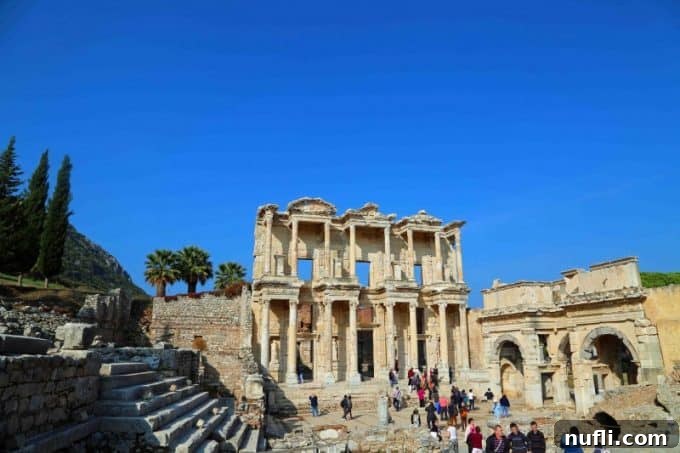Ephesus, Turkey: Unveiling the Grandeur of a UNESCO World Heritage Site
Recently designated a UNESCO World Heritage Site, Ephesus in Turkey stands as a breathtaking testament to ancient civilizations. Having had the privilege of visiting this awe-inspiring archaeological wonder on multiple occasions, each journey deepens the appreciation for its profound history and magnificent ruins. This ancient city, once a vibrant epicenter of culture, commerce, and religion, offers an unparalleled glimpse into the lives of Greeks and Romans who walked its marble streets millennia ago.
Founded around 2000 BC by the ancient Greeks, Ephesus rapidly ascended to become the wealthiest of the Ionian cities and one of the most significant cultural hubs across the Mediterranean world. Its prosperity was intrinsically linked to its strategic location as a port city and its unwavering dedication to the goddess Artemis. The Artemision, a colossal temple built in her honor, was a feat of architectural genius. Taking 120 years to complete, it rightfully earned its place as one of the Seven Wonders of the Ancient World, drawing pilgrims and visitors from far and wide.
At its zenith, Ephesus was home to an astounding quarter of a million people, making it one of the largest and most influential cities of its time. What truly astounds visitors today is the sheer scale and complexity of the city, considering that only an estimated 13% of its entire ancient expanse has been unearthed. This limited excavation hints at the immense grandeur and sophisticated urban planning that characterized Ephesus in its prime, leaving much of its secrets still buried beneath the Anatolian soil.
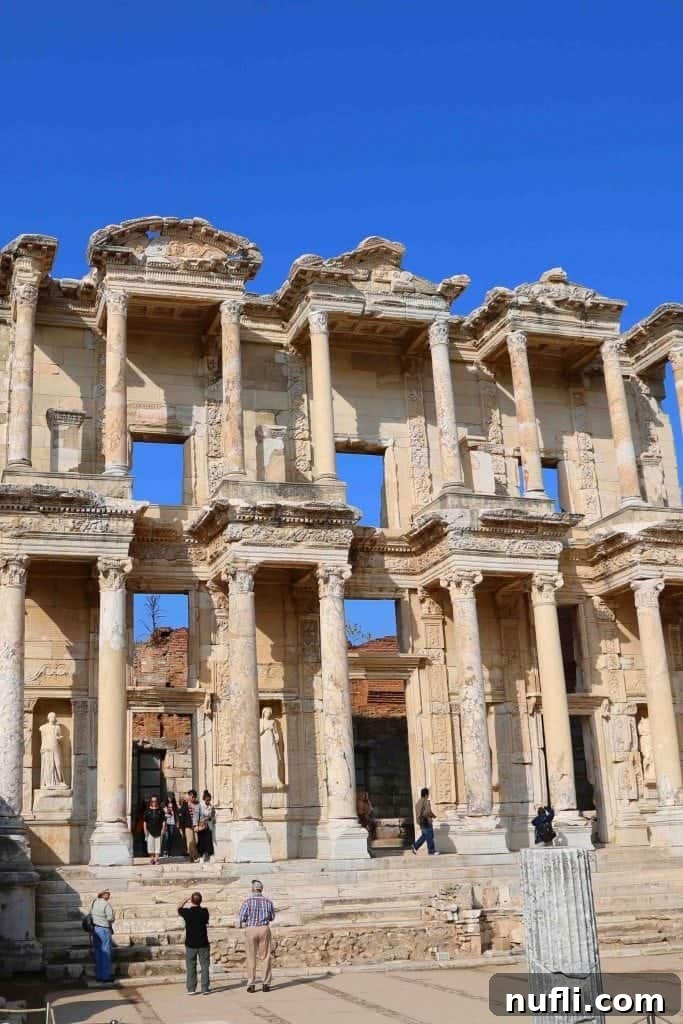

For those eager to dive into the wonders of Ephesus without delay, here are some top resources to enhance your trip:
- 🏨 Find the best hotels and vacation rentals near Ephesus
- 📍 Book unforgettable tours and experiences in Ephesus

The Architectural Marvels of Ephesus: A Journey Through Time
Walking through Ephesus is like stepping back in time, with each ruin telling a story of power, innovation, and daily life in antiquity. The city’s most iconic structure, arguably, is the Library of Celsus. This grand edifice was not only designed to house an impressive collection of 12,000 scrolls, making it one of the largest libraries in the Roman world, but also served as a monumental mausoleum for Tiberius Julius Celsus Polemaeanus, a former governor of Asia, who is entombed in a crypt directly beneath its central apse. The reconstructed facade, adorned with statues representing Wisdom (Sophia), Knowledge (Episteme), Intelligence (Ennoia), and Valor (Arete), is a masterpiece of Roman Baroque architecture and a prime example of the city’s intellectual heritage.

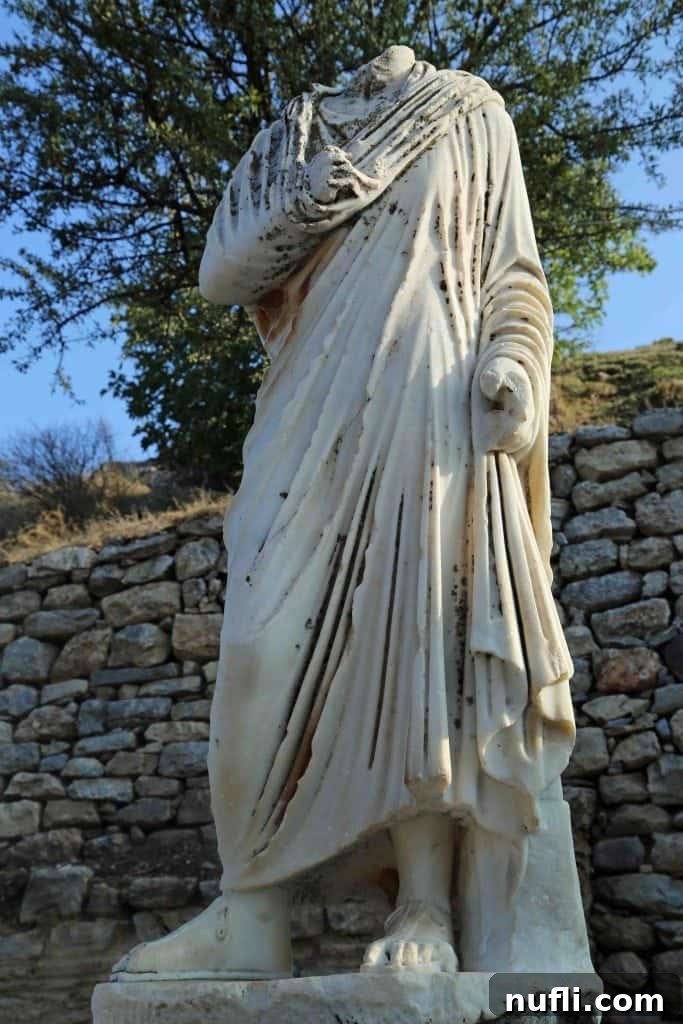

While exploring, you might notice the endearing presence of resident felines. Ephesus is famously populated by numerous friendly cats, which have become a charming tourist attraction in their own right. Our guide once shared the fascinating anecdote that these cats were initially introduced by archaeologists to help control rodent populations in the excavation areas. Over time, they have thrived and now add a living, breathing element of charm to the ancient stones. Many are quite sociable and will happily accept a gentle pet or a moment of your attention, making for delightful photo opportunities amidst the ruins.
For a deeper dive into the available guided experiences and day trips to Ephesus, you can find a comprehensive list of tours right here. These tours often provide invaluable insights from expert guides, bringing the history of Ephesus to life.
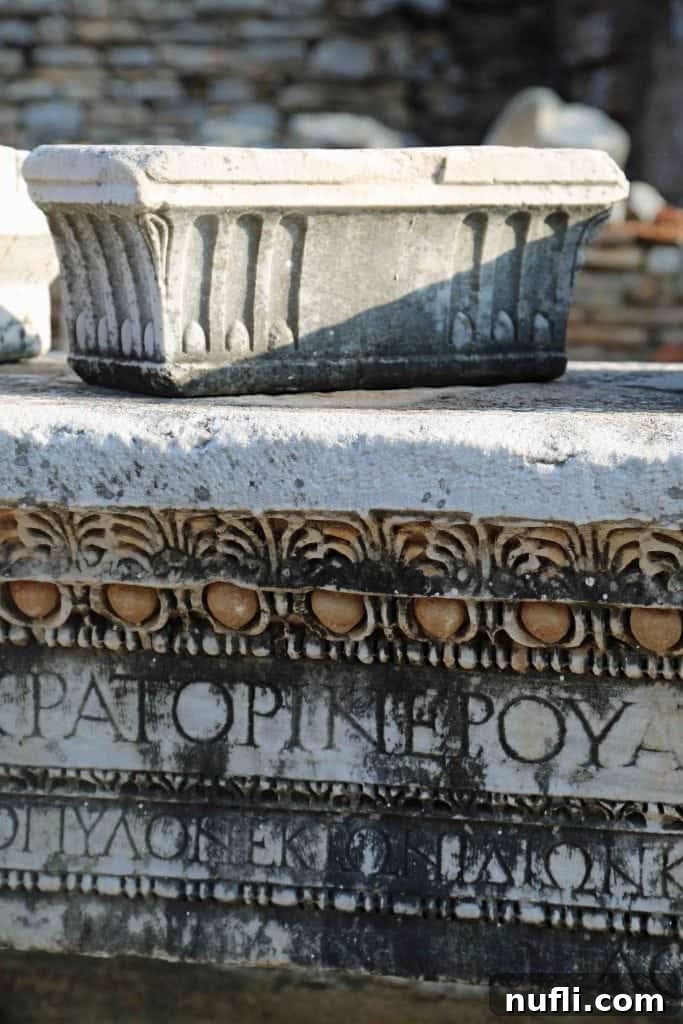
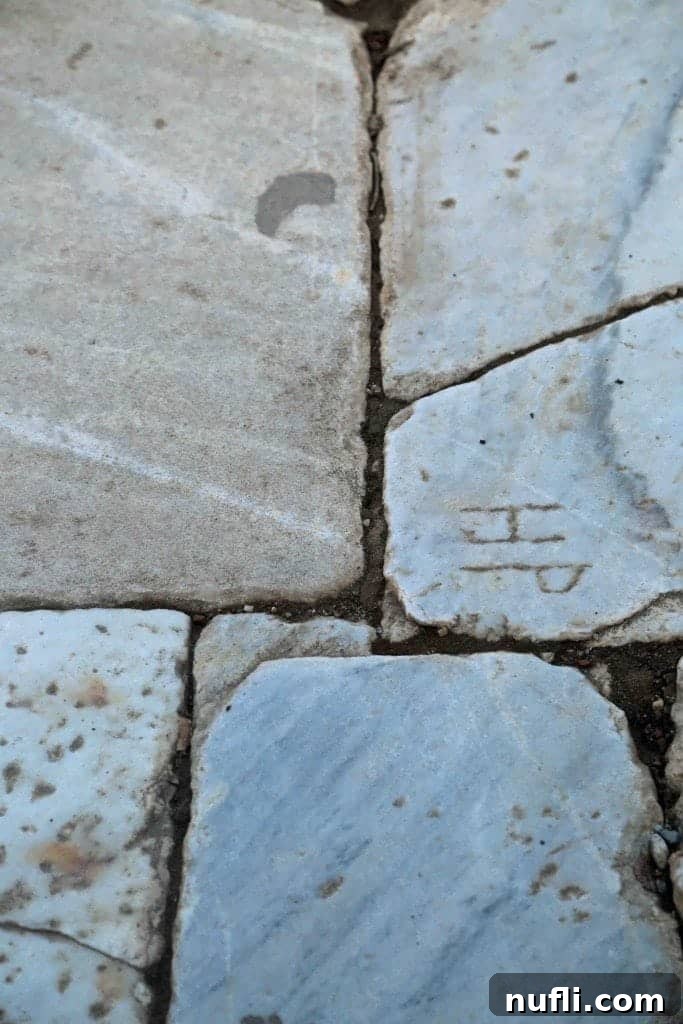
As you wander the pathways, keep an observant eye out for a unique historical detail: initials carved into the polished marble stones. Our guide illuminated the meaning behind these marks, explaining that they represent the personal signature of the artisan or worker who completed that specific section of the walkway. These subtle engravings served as a proud mark of their craftsmanship, a tangible connection to the individuals who meticulously built this grand city thousands of years ago. It’s a poignant reminder of the human effort behind such monumental achievements.
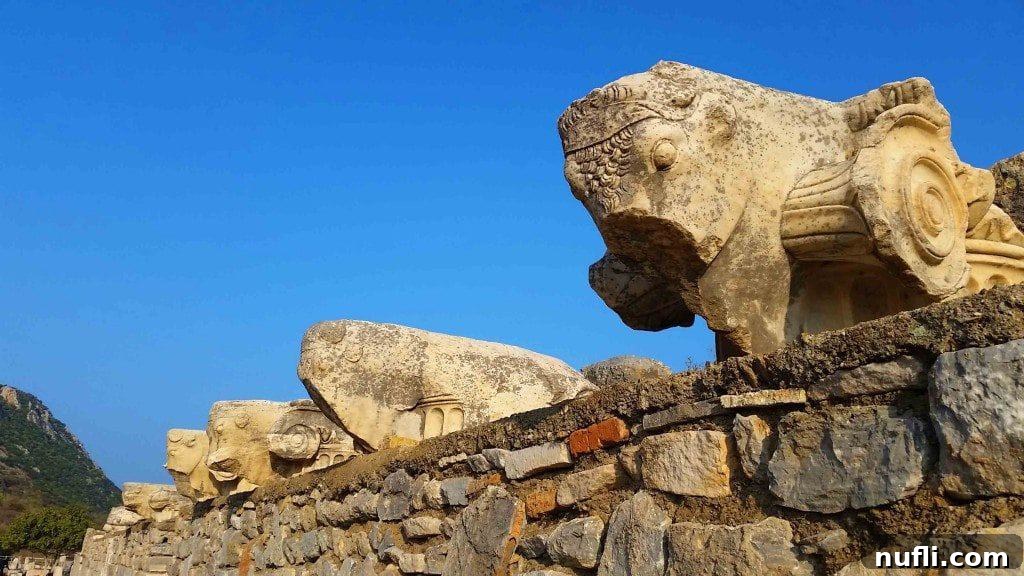

Beyond Ephesus itself, Turkey offers an incredible array of destinations and experiences. There are countless more reasons to visit and fall in love with Turkey, a country brimming with rich history, diverse landscapes, and warm hospitality. From the bustling bazaars of Istanbul to the fairy chimneys of Cappadocia and the pristine beaches of the Turquoise Coast, Turkey is a nation that promises unforgettable adventures for every traveler.

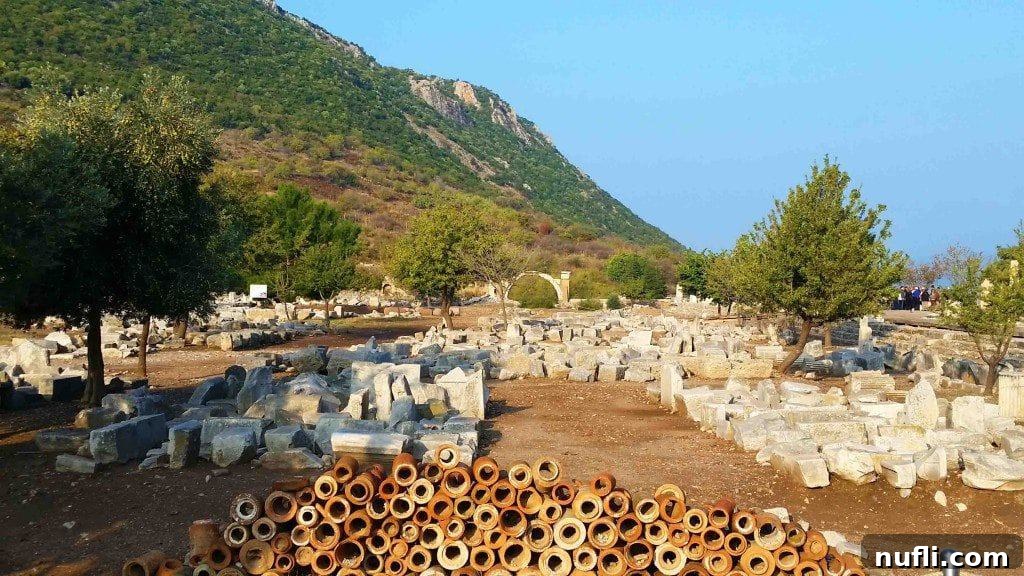
Engineering Marvels: Ancient Infrastructure and Urban Planning
Ephesus was not only a center of culture and religion but also a hub of remarkable engineering. Our guide highlighted the sophistication of the city’s ancient water supply system, noting that many of the original lead water pipes unearthed during excavations could, astonishingly, still hold water without leaking today. This speaks volumes about the advanced techniques employed by Roman engineers to connect these pipes, ensuring a consistent and efficient water distribution system for a city of hundreds of thousands. Leaking pipes, a common modern issue, were rarely a problem for the Ephesians, showcasing an unparalleled mastery of plumbing that predates much of what we consider modern innovation.
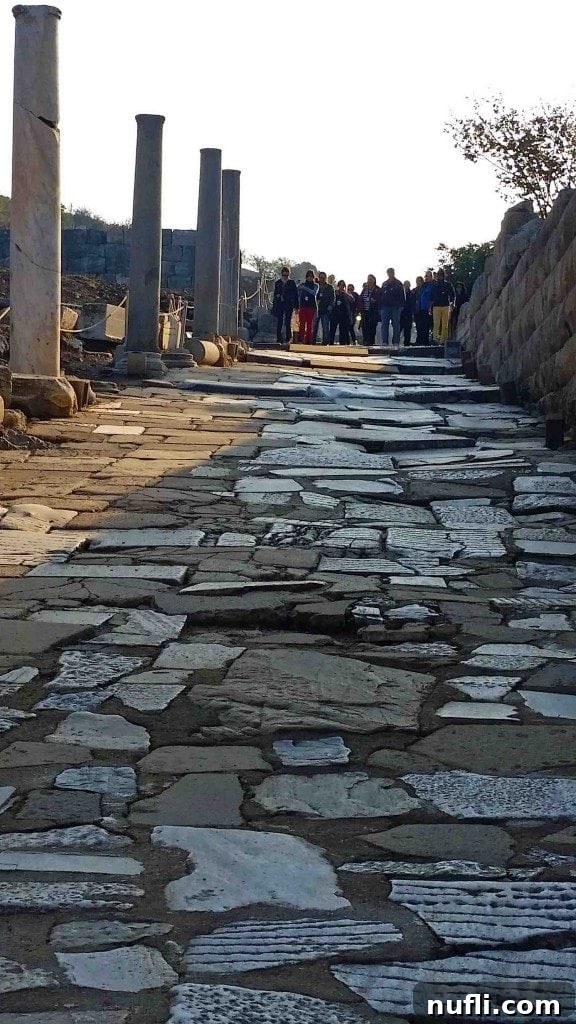
Another ingenious aspect of Ephesian urban design is visible in the very ground you walk upon. The pathways are not perfectly smooth; instead, ridges were meticulously hand-cut into the marble stones. This practical feature served a crucial purpose: to provide traction. Marble, when wet, can become incredibly slippery, posing a hazard, especially during rainstorms or damp conditions. These carefully crafted grooves ensured safer passage for the city’s inhabitants and visitors, demonstrating a thoughtful consideration for public safety and convenience in ancient times.
Once again, for comprehensive exploration and guided experiences in Ephesus, consider browsing the diverse range of tours available through this link.
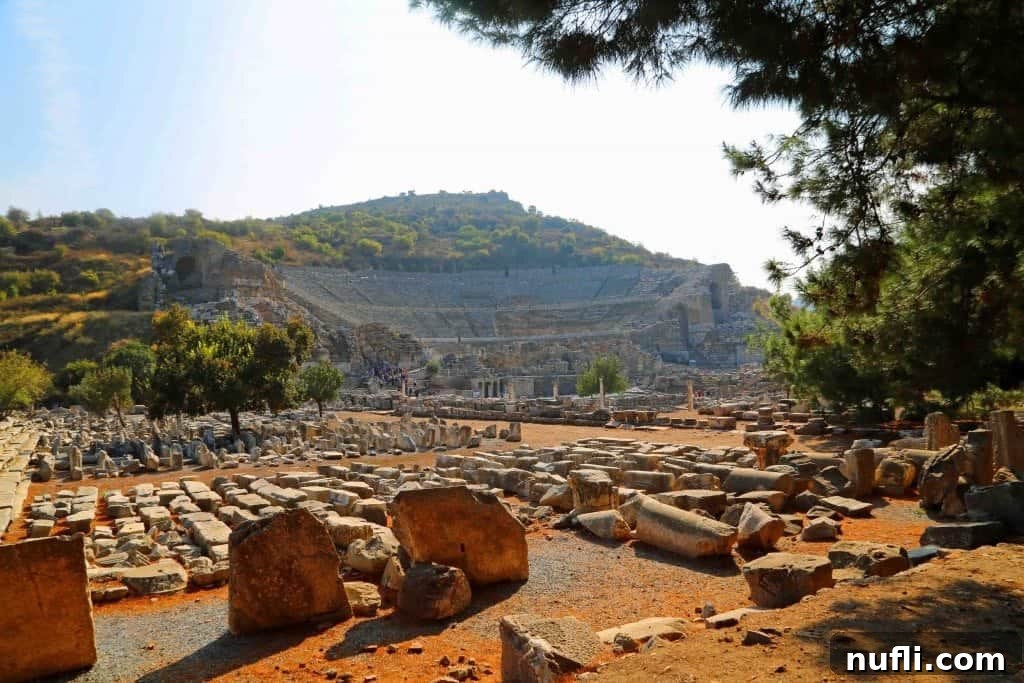
The Grand Stage of History: The Great Theater
Dominating the landscape at the end of the main thoroughfare, the Great Theater of Ephesus is another monumental structure that commands attention. Carved into the side of Mount Pion in the 4th century BC, this colossal amphitheater was not merely a venue for entertainment but a central meeting point for civic life. It boasted an astonishing capacity, capable of accommodating up to 24,000 spectators, making it one of the largest theaters in the ancient world. Here, dramatic plays were performed, gladiatorial contests thrilled the crowds, and significant public assemblies took place. It is also famously remembered as the site where St. Paul once preached, facing a riot incited by silversmiths whose trade in Artemis idols was threatened by his Christian message.
Even today, the Great Theater is renowned for its outstanding acoustics. A whispered word from the stage can be heard clearly at the very top rows, a testament to the sophisticated understanding of sound engineering possessed by its ancient builders. This incredible acoustic quality allows modern visitors to truly appreciate the immersive experience that ancient Ephesians would have enjoyed during performances and speeches.
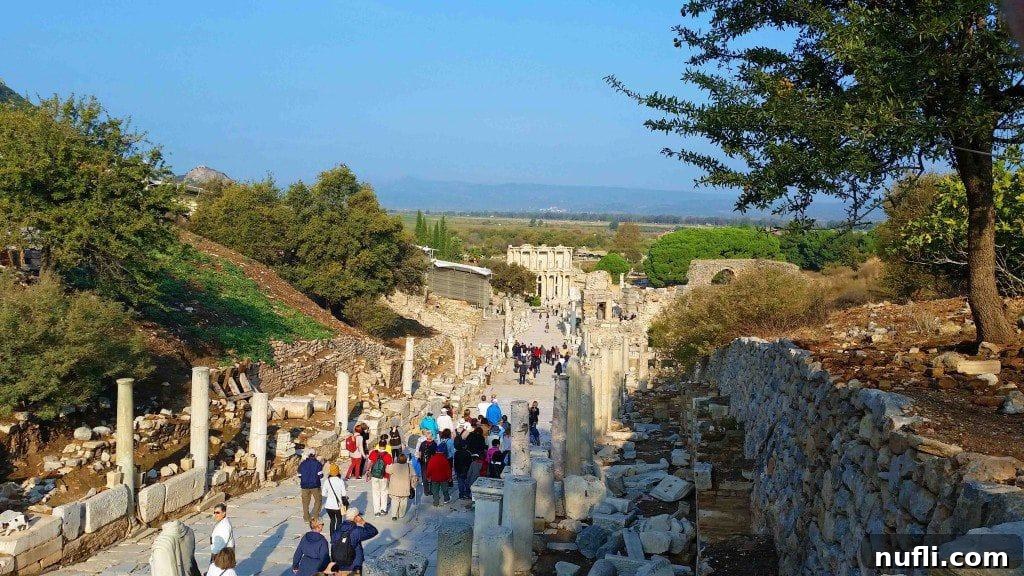

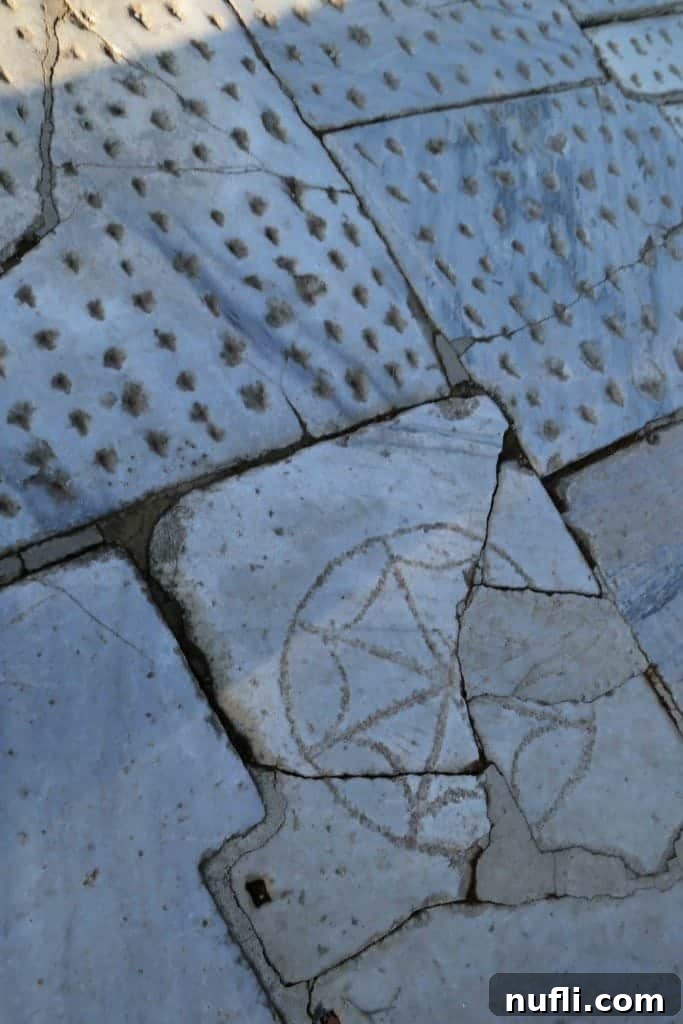
Beyond the Main Path: Hidden Gems and Daily Life
While the Library of Celsus and the Great Theater are undoubtedly highlights, Ephesus offers a wealth of other fascinating sites that bring the ancient city to life. The Terrace Houses, for example, offer an extraordinary insight into the opulent lifestyle of wealthy Ephesians. These residential complexes, built into the hillside opposite Curetes Street, feature multi-storied dwellings adorned with elaborate mosaics, stunning frescoes, and sophisticated plumbing systems, providing a window into their daily routines and artistic tastes. Visiting these well-preserved homes is like walking into an ancient Roman villa.
Explore the intricate details of Hadrian’s Temple, dedicated to Emperor Hadrian, with its exquisitely carved arch and mythological friezes. Discover the Odeon, a smaller theater used for political meetings and concerts, and the various agoras that served as commercial and civic centers. Don’t miss the Public Latrines, a communal toilet facility that provides a humorous yet historically significant insight into Roman hygiene and social interaction.

Planning Your Visit to Ancient Ephesus
To truly immerse yourself in the history and beauty of Ephesus, consider dedicating at least half a day, if not a full day, to explore the site. Wear comfortable walking shoes, as you’ll be covering significant ground on uneven surfaces. Bringing water, sunscreen, and a hat is highly recommended, especially during the hot summer months. While it’s possible to explore independently, hiring a local guide can significantly enrich your experience, providing context, anecdotes, and insights that bring the ruins to life.
Ephesus is conveniently located near the town of Selçuk, which offers various accommodation options and easy access to other historical sites like the House of the Virgin Mary and the Basilica of St. John. The coastal town of Kuşadası, a popular cruise ship port, is also a short drive away, providing a wider range of hotels and amenities.
For a comprehensive list of guided tours that cater to different interests and durations, ensuring you make the most of your visit to this incredible UNESCO site, be sure to check out the options available here. Embark on a journey to Ephesus and witness the enduring legacy of one of the ancient world’s most magnificent cities.
